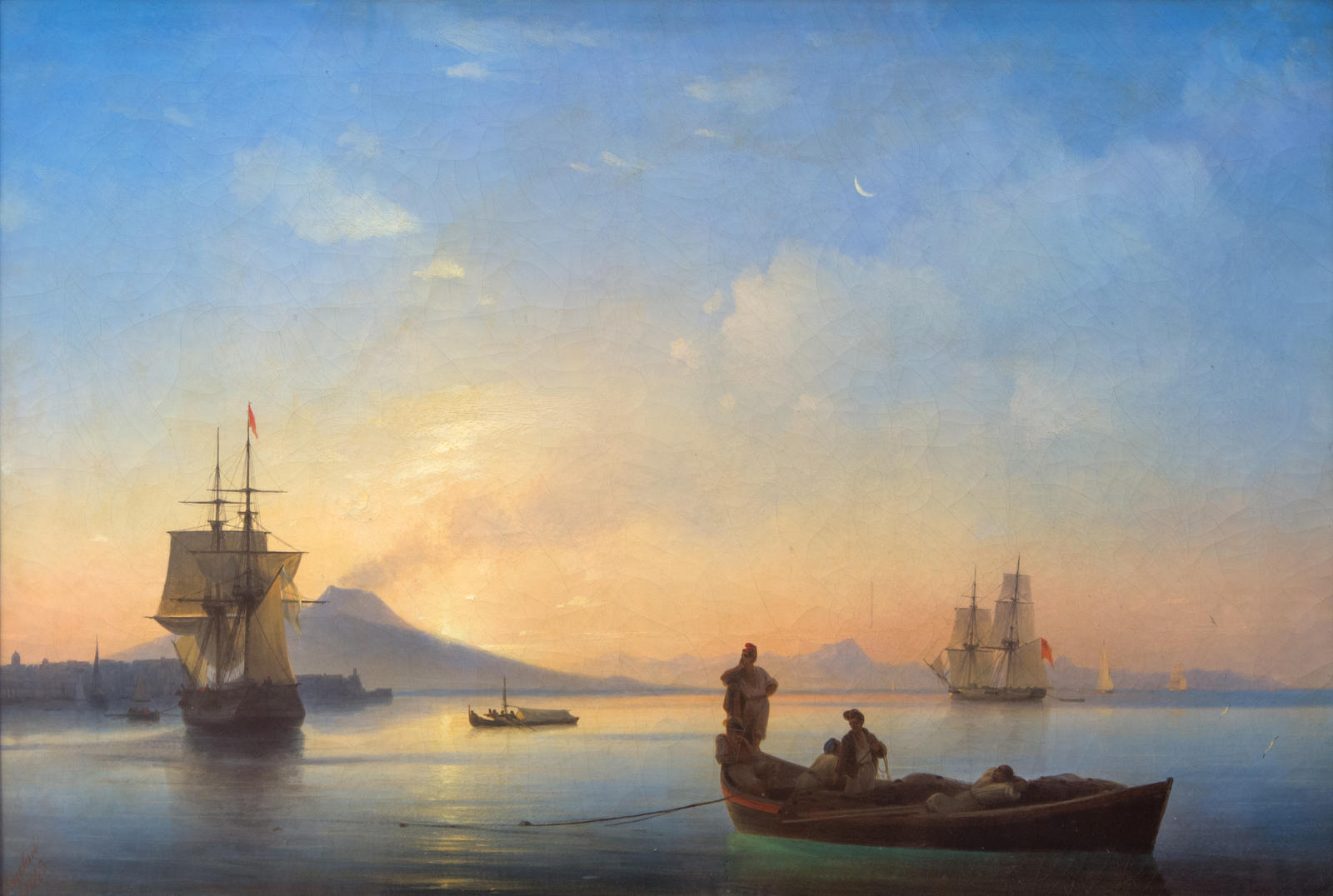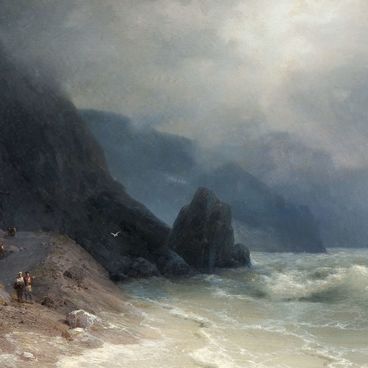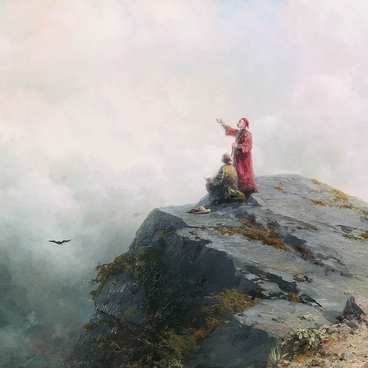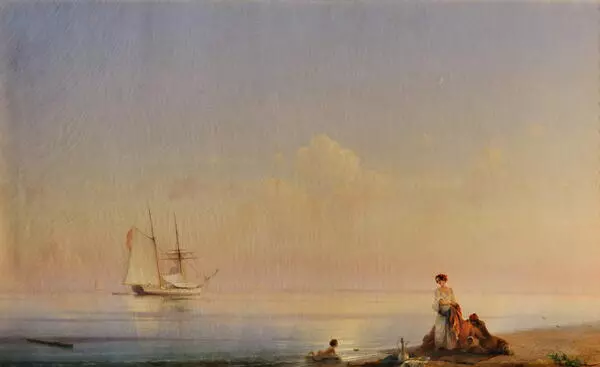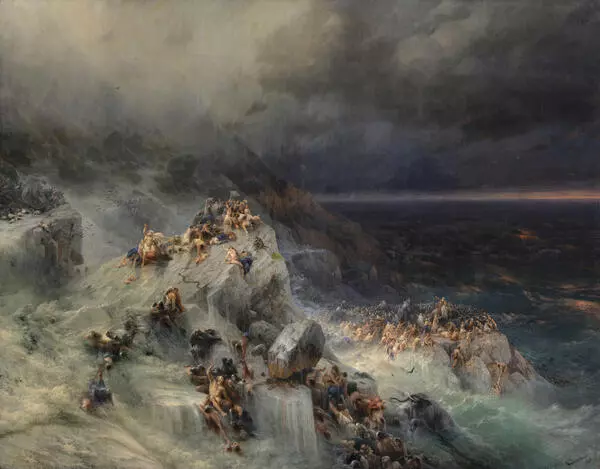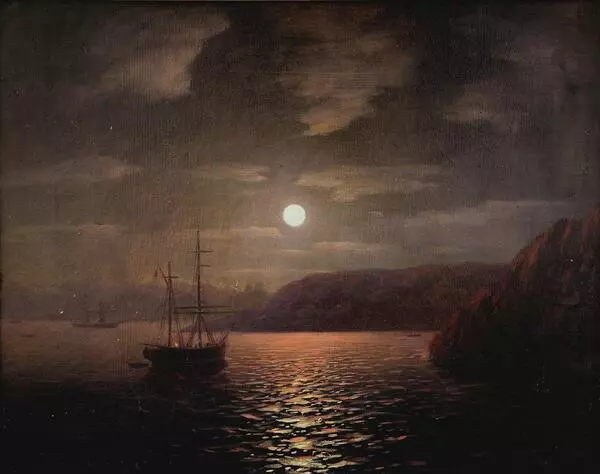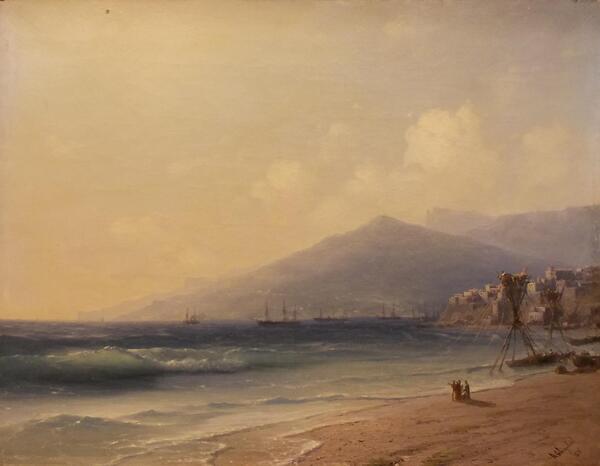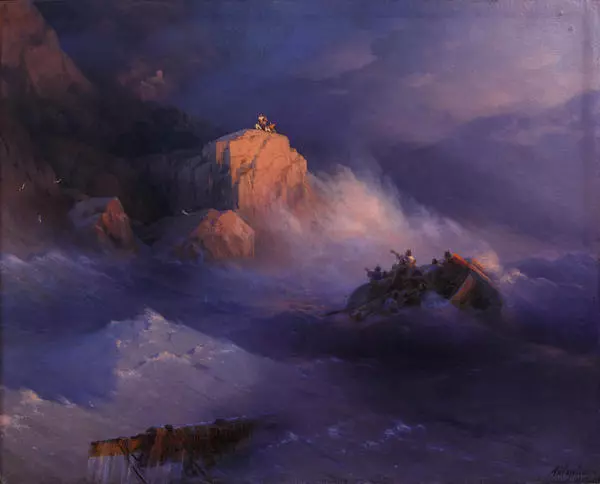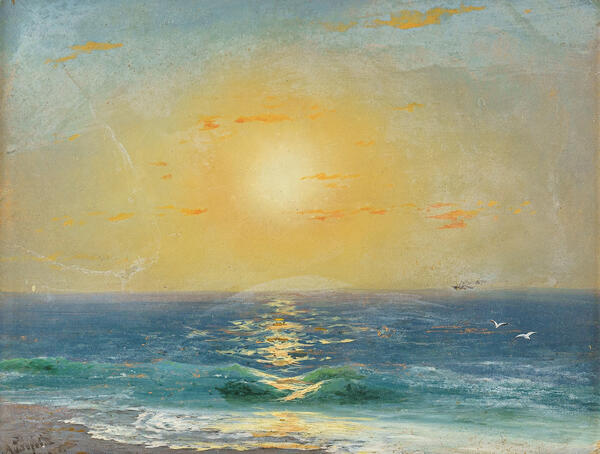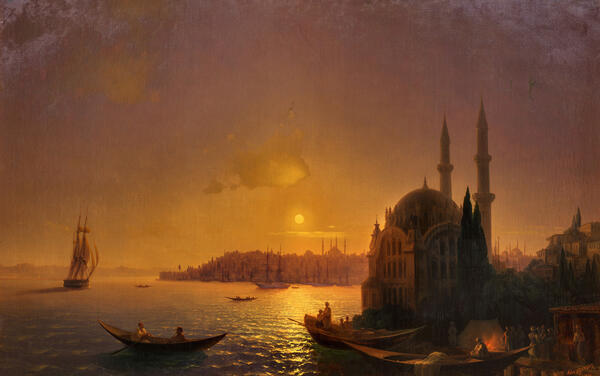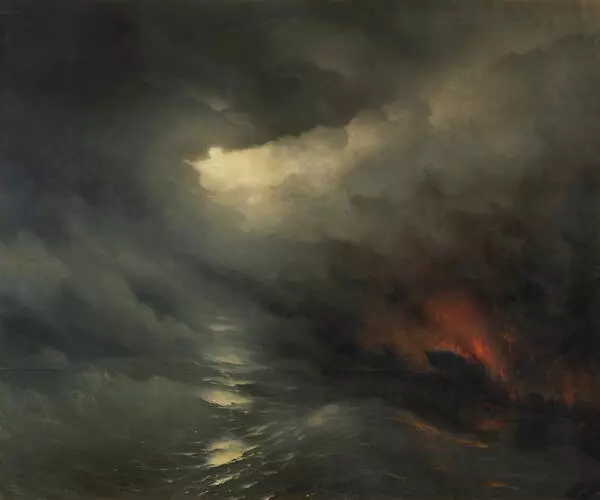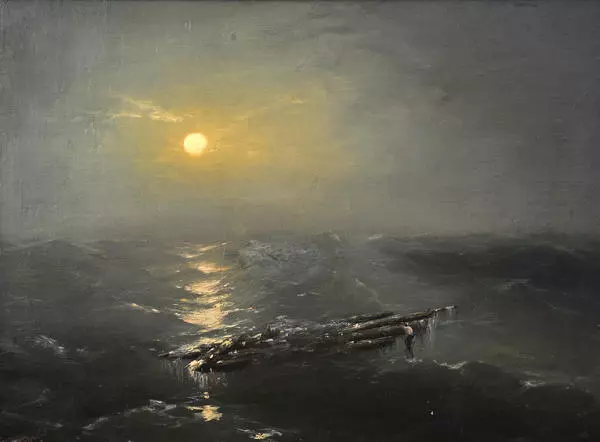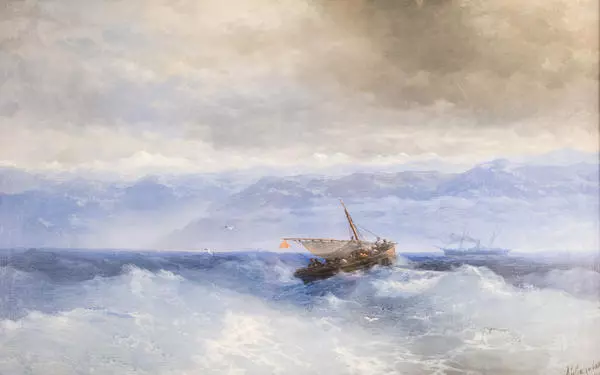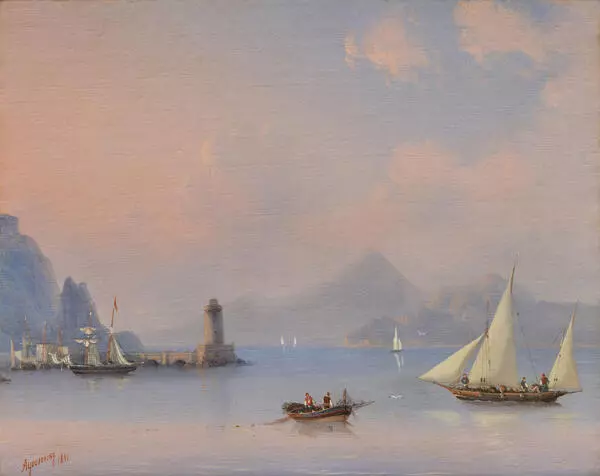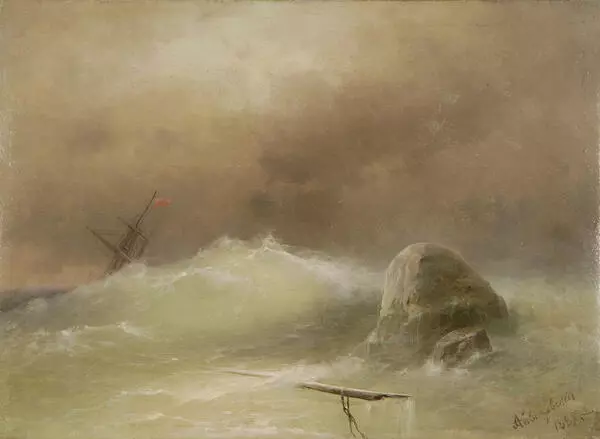In autumn 1840, Ivan Aivazovsky graduated from the Academy of Arts and went on a journey abroad, which made him one of the most famous artists in Europe. He worked in Rome, Naples, Sorrento and Venice also holding exhibits in Paris, Amsterdam and London. Aivazovsky wrote about his travel: ‘Rome, Naples, Venice, Paris, London and Amsterdam have honoured me with the most flattering encouragement, and I could not but feel proud of my success in foreign lands’.
That journey helped him to overcome the beginner’s lack of self-confidence and become a mature artist. By the end of his overseas journey, Aivazovsky was already much spoken about as one of the most prominent marine painters of his day. Furthermore, many of the great older masters recognised the achievements of the young artist. Thus, painter Alexander Ivanov whom Aivazovsky met in Italy claimed that nobody there could paint water as good as Aivazovsky did. Even King Ferdinand II wished to see the Russian painter and bought from him a painting depicting the Neapolitan fleet. And Pope Gregory XVI presented Aivazovsky with a gold medal as a token of encouragement.
Aivazovsky famously had an excellent visual memory helping him to reproduce the Italian landscapes that had impressed his during his journey, for many years afterwards. Speaking of his method of work, Aivazovsky wrote: “The movement of the elements is elusive and escapes the brush: a lightning, a blast of wind, a splash of a wave are impossible to be drawn from nature…”
The Bay of Naples in the Morning is one of Aivazovsky’s early paintings of the Italian nature. He created it abroad in 1843. We can see a smooth surface of the sea and a clear sky. The artist was fascinated by the air transparency and the morning tranquillity in Naples. He portrayed the enchanted atmosphere with a delicate, subtle colour-scheme. The heroes of his painting appear to share the author’s romantic sentiment: the fishermen have given up their work and are staring into the distance, at the rising mountain of Vesuvius. Aivazovsky exquisitely conveyed the colours of the Italian sky and water, the tranquillity of an early morning and the splendour of the rising sun.
That journey helped him to overcome the beginner’s lack of self-confidence and become a mature artist. By the end of his overseas journey, Aivazovsky was already much spoken about as one of the most prominent marine painters of his day. Furthermore, many of the great older masters recognised the achievements of the young artist. Thus, painter Alexander Ivanov whom Aivazovsky met in Italy claimed that nobody there could paint water as good as Aivazovsky did. Even King Ferdinand II wished to see the Russian painter and bought from him a painting depicting the Neapolitan fleet. And Pope Gregory XVI presented Aivazovsky with a gold medal as a token of encouragement.
Aivazovsky famously had an excellent visual memory helping him to reproduce the Italian landscapes that had impressed his during his journey, for many years afterwards. Speaking of his method of work, Aivazovsky wrote: “The movement of the elements is elusive and escapes the brush: a lightning, a blast of wind, a splash of a wave are impossible to be drawn from nature…”
The Bay of Naples in the Morning is one of Aivazovsky’s early paintings of the Italian nature. He created it abroad in 1843. We can see a smooth surface of the sea and a clear sky. The artist was fascinated by the air transparency and the morning tranquillity in Naples. He portrayed the enchanted atmosphere with a delicate, subtle colour-scheme. The heroes of his painting appear to share the author’s romantic sentiment: the fishermen have given up their work and are staring into the distance, at the rising mountain of Vesuvius. Aivazovsky exquisitely conveyed the colours of the Italian sky and water, the tranquillity of an early morning and the splendour of the rising sun.

